The skin disease rosacea severely affects the lives of those affected. This is because the chronically inflamed rosacea face stands out with its nodules, papules and pustules, as well as redness.
That is why the most important goal of rosacea treatment is to reduce the symptoms or make them disappear. There are various therapeutic approaches for this.
The use of medication for external or internal application is just as important as adapting your lifestyle – be it by avoiding exacerbators of the symptoms or finding the right diet for the individual course of rosacea.
There are also treatment options for advanced degrees of the disease or rarer forms such as rosacea eyes.
If you want to use a rosacea home remedy to support your skin, always discuss it with your dermatologist first.
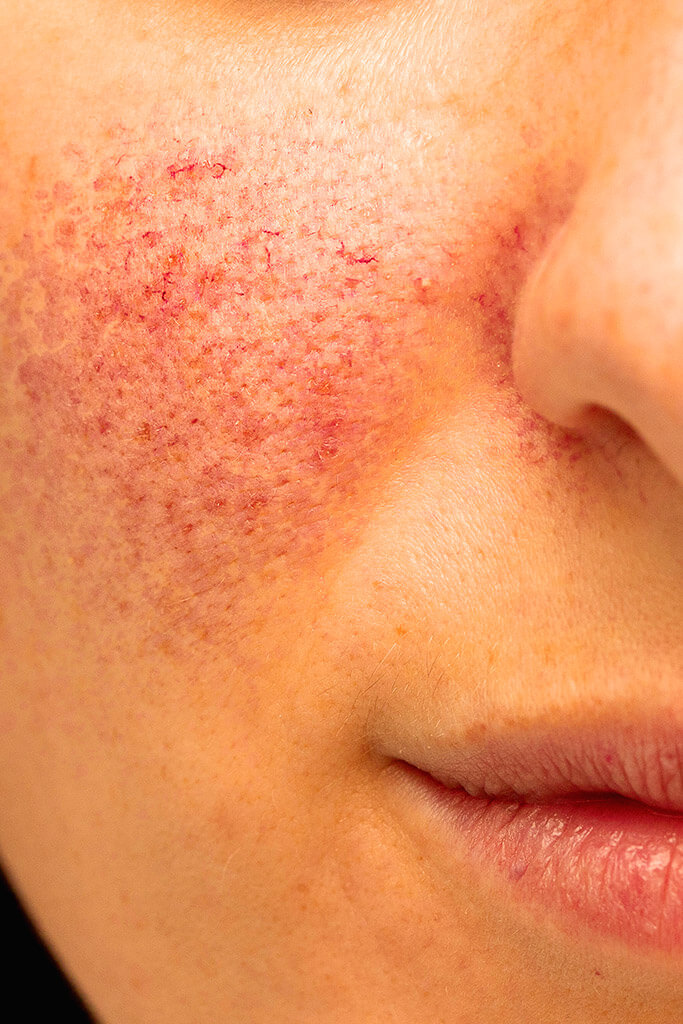
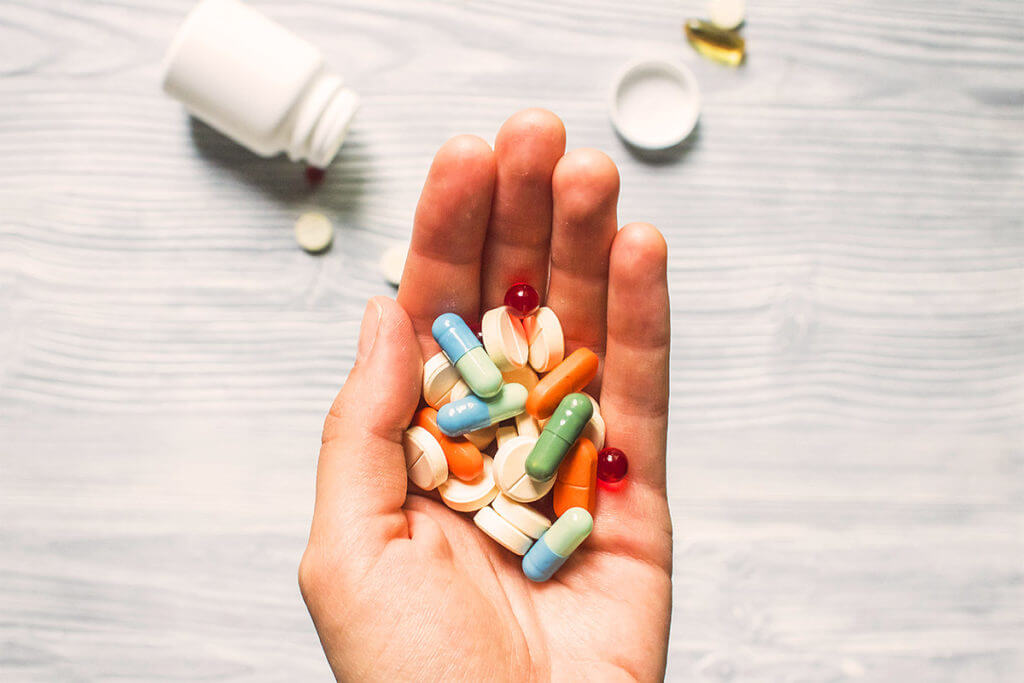
The first step in rosacea treatment is various medications.
It is important that you have your treatment, with all its progress and possible setbacks, supervised by a dermatologist who can respond to the individual needs of your skin.
If rosacea is treated externally, it is applied in the form of a rosacea cream, lotion or gel.
These contain the appropriate active ingredients and can be applied specifically to the affected areas where the fine veins or the very pronounced pustules and nodules are located.
The different substances also have different areas of action. Among other things, these active ingredients have proven effective for local application in rosacea patients:
Metronidazole is an antibiotic for rosacea patients. It is intended to reduce inflammation of the facial skin and thus also reduce redness.
Another popular active ingredient is azelaic acid. It is also said to have anti-inflammatory properties. It also ensures that the excessive tendency of rosacea skin to keratinize is regulated and thus contributes to an improvement in the appearance of the skin.
The modern substance brimonidine counteracts one of the most noticeable symptoms of rosacea – namely the dilated blood vessels. It ensures that these narrow again and allows the redness to subside.
As an alternative, bacteriophages can be a good option for rosacea. The application with natural viruses reduces redness on the skin.

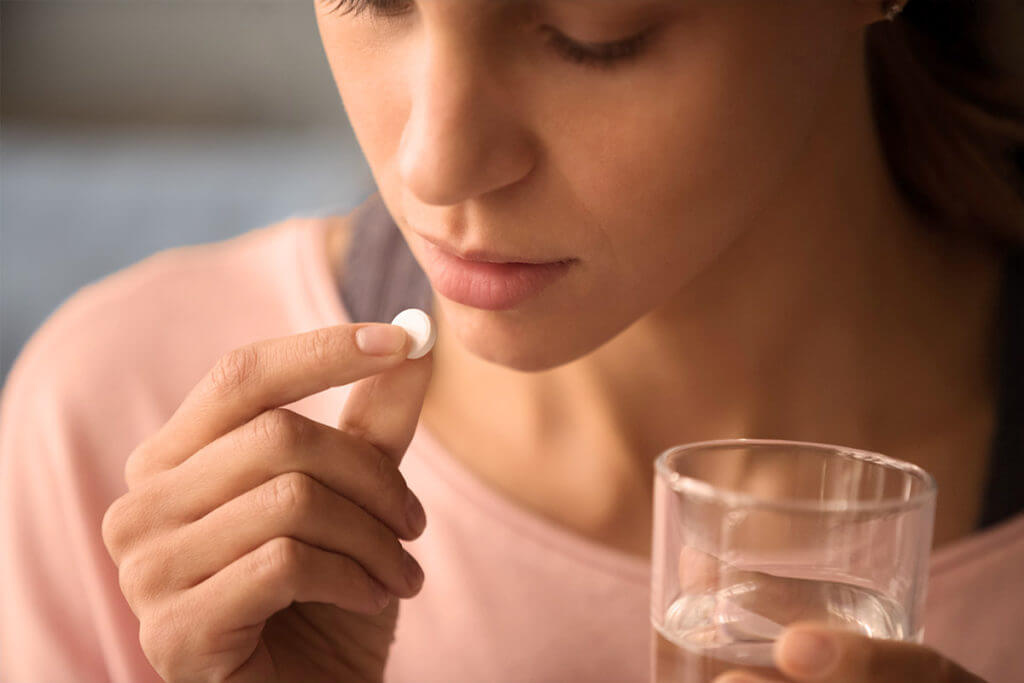
If the symptoms do not improve sufficiently with rosacea treatment based on topical medication, the skin disease can be treated systematically.
This means that cream, lotion and gel are joined by oral medication. These usually come in the form of tablets. These active ingredients are used for ingestion:
As you can see, antibiotics are primarily used for internal application. This is because these inhibit inflammation in the appropriate dosage. They also slow down the immune system, whose overreaction is partly responsible for the chronic inflammation of the skin.
The tetracyclines (such as doxycycline and minocycline) are often better tolerated than the macrolides (such as erythromycin and clarithromycin).
Retinoids are substances related to vitamin A. These are normally used in the treatment of acne. But they can also achieve good results with rosacea. Isotretinoin is one of them. It improves the appearance of the skin.
The following applies to all medications for internal use: The side effects can be more severe than with preparations that are applied externally. Your dermatologist will also inform you about this. Isotretinoin must also not be used in pregnant women or if they wish to become pregnant.
Alternatively, homeopathic remedies can also be used against rosacea.
If the rosacea is already more advanced, the dilated blood vessels will also have manifested on the cheeks and nose, and possibly also on the chin and forehead. This most severe form of skin disease is known in medicine as rosacea fulminans.
A skin condition from which those affected suffer. However, there are ways to eliminate these dilated vessels, such as laser treatment.
It can also be used to treat the tuberous nose typical of rosacea.
The aim of this treatment method is also to eliminate the dilated blood vessels in the face.
This is achieved by sclerosing the affected vessels with the help of an electric current.
This is another way to achieve good results and improve the appearance of the skin.
The aim of this form of therapy is to eliminate defective structures in the skin. The sensitive skin is pre-treated with a substance that makes it more sensitive to light.
These areas are then irradiated with light at specific wavelengths.
The previously applied substance, usually in the form of a cream, changes its structure and consequently leads to the dissolution of the defective skin structures.
This type of rosacea treatment is particularly suitable for the most severe form, glandular-hyperplastic rosacea.
Here, the patients show growths, also known as phyma. This results in the typical bulbous nose, particularly in the nose area.
Surgical therapies such as dermabrasion or dermashaving can reduce the appearance of rosacea skin.
Diet also plays an important role in rosacea treatment and can be adjusted by you. Unfortunately, there is no generally effective diet for rosacea, i.e. no specific rosacea diet.
So the key is to observe your skin with patience and find out which foods may be less good for it than others. However, there are some typical foods whose omission could lead to improvements.
Products with a high fat and sugar content in particular are suspected of promoting rosacea symptoms and rosacea flare-ups.
There may also be a deterioration in the consumption of dairy products and animal products in general.
What should also be avoided: spicy food or food that is too hot, as well as alcohol in the case of rosacea. You can find out all about it here: Diet for rosacea – foods you should avoid!

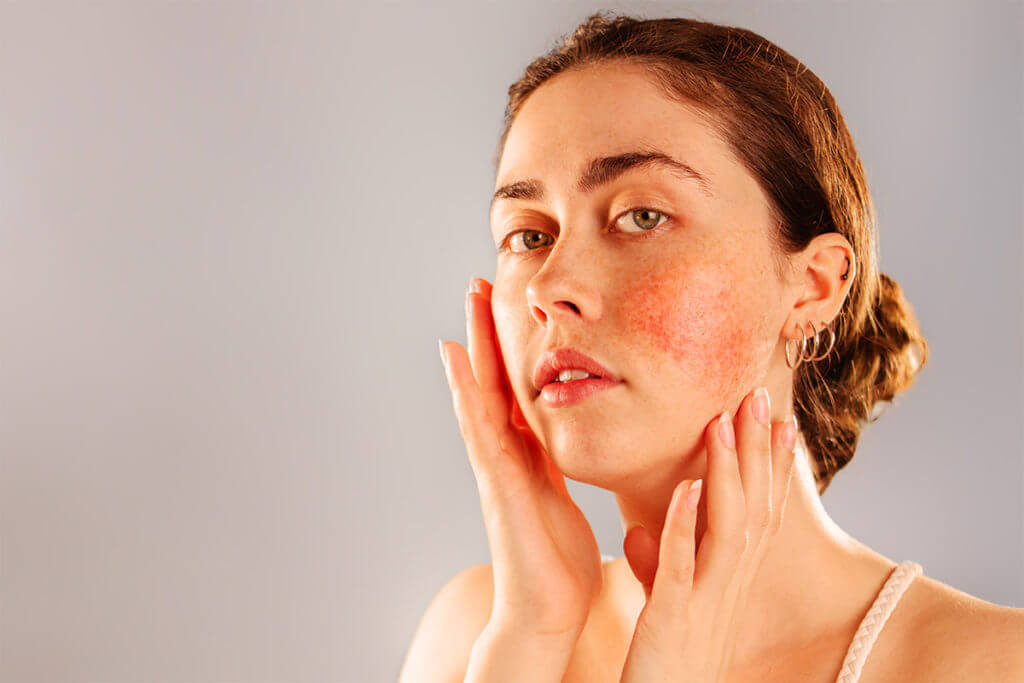
There are typical triggers for the symptoms of rosacea. You should avoid these as much as possible. They include:
Strengthening the skin barrier is a useful support for the skin as part of rosacea treatment. Probiotic care products that strengthen the skin’s microbiome can help here.
This is because some of the bacteria that colonize our skin, such as Vitreoscilla filiformis, have anti-inflammatory properties.
Others naturally colonize the human skin, such as the Demodex mite (hair follicle mite or Demodex folliculorum). And the next ones in turn promote inflammation. If the skin barrier is disturbed, this relationship is out of balance.
The probiotic skin spray SkinCare Protect from Sanubiom promotes the growth of good bacteria. In addition, the phage technology it contains ensures that the bad bacteria are specifically eliminated.
This rebalances the skin, eliminates irritation and reduces redness.
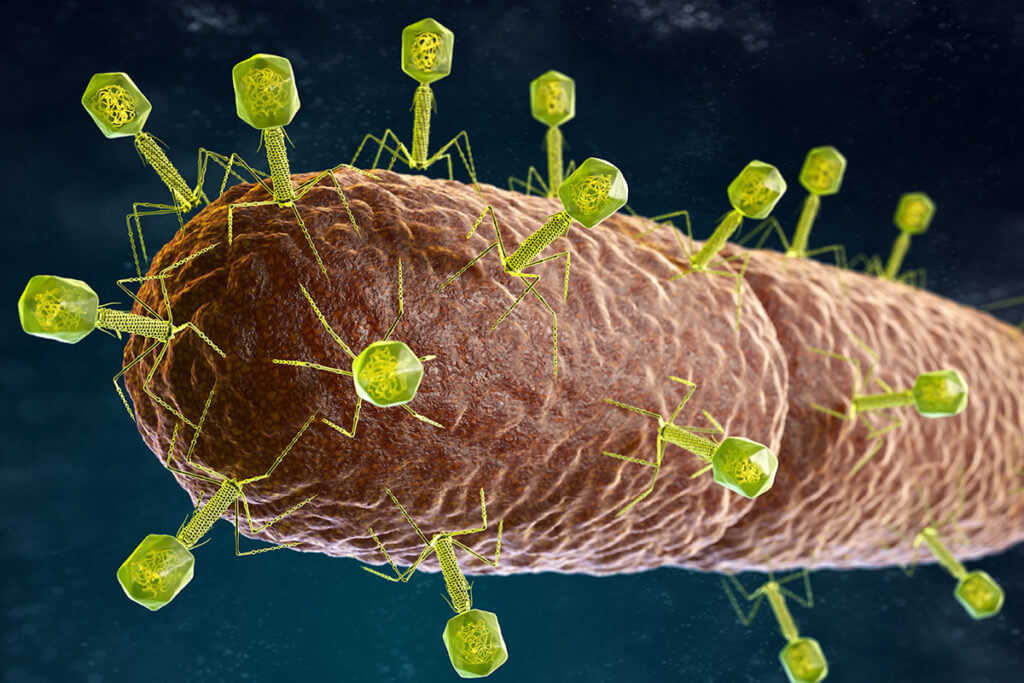
Author: Katharina Hillinger
“Our skin nourishes, detoxifies and protects our body. But in order for it to fulfill its functions, our skin flora must be in balance. Healthy skin is characterized by a diverse ecosystem of microbes that form a kind of protective shield.”
Share post: